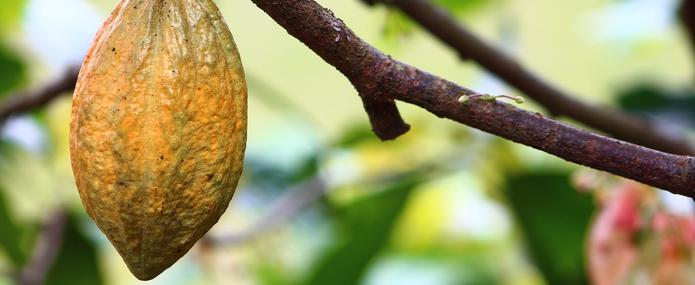Most of the chocolate we eat comes from cocoa grown in Ghana and Ivory Coast by nearly 4 million producers whose incomes rarely exceed the poverty line (set by the World Bank at $1.90 per day). Since June 11th, these two countries, the first and second largest cocoa producers in the world, had engaged in a fierce battle with the chocolate multinationals to obtain a minimum purchase price of $2,600 per ton (compared to about $2,500 at the current rate). Negotiations around this floor price failed on July 3rd, a missed opportunity to improve the living conditions of producers, and which could also have long-term consequences for the environment, including deforestation. Especially since cocoa has entered a new cycle, and no one has really prepared for it.
A last-ditch action
The three-week threat by Ivory Coast and Ghana of a blockage of cocoa sales for the 2020-2021 season (production is generally sold several months in advance on futures markets) marked a turning point in a sector historically characterised by a balance of power unfavourable to producers. While the price, set on international markets, has fluctuated over the past 10 years between $2,000 and $3,500 per ton, with a historical low of around $1,700 in 2017, producers have made several demands: a floor price of $2,600; the right to "give their price" as producers; and no longer "take" the price imposed by fluctuations in the world market.
At first glance, one might have thought that this episode would have strengthened the power of producers in the balance of power between them and the rest of the chocolate industry. But it can also be seen as a last-ditch action. However, Ghana and Ivory Coast are struggling to maintain the profitability of the sector, faced with the development of new diseases, the ageing of plantations and the impacts of climate change. Under these conditions, a too low cocoa price may lead West African producers to switch from cocoa to other more profitable crops, such as cashew nuts, rubber or palm oil. This possibility is regularly recalled by the national managers of the sector. Other countries could then seek to occupy the market, taking advantage of productive advantages that would allow them to produce cocoa at a lower cost. For example, by clearing large areas of preserved forests, whose fertile soils increase cocoa productivity tenfold in the first few years of harvest. In Central African countries, for example, cocoa could pose a serious threat to the forests of the Congo Basin.
Cocoa cycles
Already 25 years ago, François Ruf, a cocoa specialist, described the cycles of cocoa in Booms and crises of cocoa (Karthala, 1995). He explained that every 30 years or so, the price and production cycle leads to a new wave of deforestation, because ageing cocoa farms are abandoned and production areas move, either within a country or to new countries, where producers can benefit from the "forest rent" by clearing new land. However, all indications are that a new cocoa cycle is indeed opening up, 30 years after the one started at the end of the 1980s, and no one has prepared for it.
To prevent this new round from causing massive deforestation, it would be necessary for cocoa buyers to agree to reconsider cocoa pricing mechanisms, but also to rethink their supply model, to value less intensive, more profitable production for producers, and able to guarantee them sufficient capital to cover the costs of renewing their plantations under conditions that respect landscapes and natural resources.
Thus, the current cocoa crisis questions the market's ability to set prices that cover all the costs of sustainable production without external constraints. Since the 1960s, the share of producers' incomes in the price of a chocolate bar has fallen from 12% to only 5%. Meanwhile, as explained by the Bureau of Societal Analysis for Citizen Information (BASIC in French) in its study published in 2016, the proportion of this prize devoted to marketing, development and advertising costs has exploded. Consumers are therefore paying the high price of an economic model based on a continuous increase in supply and consumption, which leads to an increase in the number of products, brands and incentives. Why not imagining, for this new cocoa round, a less abundant but fairer and more economical supply of natural resources?
This would require the various sector’s actors to stop passing on the burden of responsibility to each other and agree to embark together on the transition to a more sustainable model: processors should adapt their industrial protocols to move from mass processing to quality chains, allowing the traceability of cocoa to the production area; distributors should transform their offer to adapt to the constraints of sustainable production; and finally, we chocolate lovers, should consider it for what it is: a tropical product whose cultivation requires a delicate balance with natural resources, to be consumed, therefore, in a responsible way.


